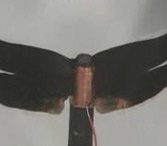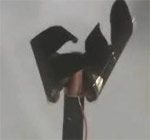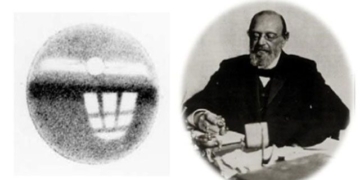South Korean researchers have invented a type of gold-plated electret film that bends when electrified. Thanks to this characteristic, it can serve as a flapping mechanism in paper airplanes, insect robots, or even smart wallpaper that emits sound.
This electret film is being developed by Jaehwan Kim from Inha University in South Korea. It contains cellulose fibers similar to regular paper, making it lightweight, cost-effective, and biodegradable.
Previously, researchers discovered a peculiar property of cellulose: it becomes electrically charged when placed under pressure. However, the electric charge, known as piezoelectricity, was too small to generate the necessary force to bend the paper, so its potential remained untapped.
 |  |
| The electret film before being electrified. Photo: Discovery | And after being electrified, it has bent. Photo: Discovery |
Kim and his team found that they could amplify the piezoelectric property by harnessing charged particles (positive ions) in cellulose-based papers like the electret film.
To create “kinetic motion” for the paper, they coated one side of a 40-millimeter long transparent electret film with a thin layer of gold. When a voltage is applied, the gold layer becomes positively charged, while the other side of the paper acquires a negative charge.
These positively charged ions, which are attached to water molecules, get attracted to the negatively charged side of the paper. As they migrate, they pull the water molecules along, creating tension on one side of the paper, causing it to bend.
The combination of ion movement and the piezoelectric effect allows the paper to bend more rapidly even when subjected to low voltage. The electret film bends 10 millimeters in one direction with enough force to lift approximately 1 gram.
However, the mechanical strength of a piece of paper, no matter how great, may not be sufficient for various types of devices, said Professor Paul Calvert, a biomaterials expert at Dartmouth College in Massachusetts.
Kim and his colleagues are working to incorporate carbon nanotubes into the cellulose fibers to increase the electric charge and, consequently, enhance the mechanical force.
T. An




















































